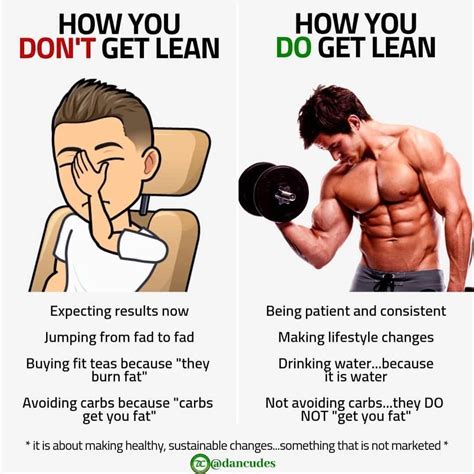How To Get Lean: Your Guide to a Slimmer, Healthier You
Getting lean isn't just about aesthetics; it's about improving your overall health and well-being. This comprehensive guide will walk you through the essential steps to achieve a lean physique, focusing on sustainable lifestyle changes rather than quick fixes.
Understanding Body Composition
Before diving into specific strategies, it's crucial to understand that "getting lean" means reducing your body fat percentage while maintaining or increasing muscle mass. Simply losing weight isn't enough; you want to recompose your body.
The Importance of Muscle Mass
Muscle is metabolically active tissue, meaning it burns more calories at rest than fat. Building and preserving muscle is key to boosting your metabolism and making it easier to stay lean long-term.
The Cornerstones of Getting Lean
Three pillars support your journey to a leaner physique: diet, exercise, and recovery.
1. Nutrition for a Lean Body
What to Eat: Focus on whole, unprocessed foods. This includes:
- Lean Protein: Chicken breast, fish, turkey, beans, lentils, tofu. Protein is crucial for muscle growth and repair.
- Complex Carbohydrates: Brown rice, quinoa, oats, sweet potatoes. These provide sustained energy without the blood sugar spikes of refined carbs.
- Healthy Fats: Avocado, nuts, seeds, olive oil. Healthy fats are essential for hormone production and overall health.
What to Limit:
- Processed Foods: These are often high in unhealthy fats, sugar, and sodium.
- Sugary Drinks: Sodas, juices, and sweetened beverages contribute to excess calorie intake.
- Excessive Alcohol: Alcohol is high in calories and can hinder fat loss.
Calorie Control: To lose fat, you need to create a calorie deficit – consuming fewer calories than you burn. However, drastic calorie restriction can be counterproductive. Aim for a moderate deficit (around 500-750 calories per day) for sustainable weight loss.
2. Exercise for Fat Loss and Muscle Gain
A combination of cardio and strength training is most effective for getting lean.
Cardio: Activities like running, swimming, cycling, or HIIT (High-Intensity Interval Training) help burn calories and improve cardiovascular health. Aim for at least 150 minutes of moderate-intensity cardio per week.
Strength Training: Lifting weights builds muscle mass, boosting your metabolism and shaping your physique. Focus on compound exercises (those that work multiple muscle groups) such as squats, deadlifts, bench presses, and rows. Aim for at least 2-3 strength training sessions per week.
3. The Power of Recovery
Rest and recovery are just as important as diet and exercise.
Sleep: Aim for 7-9 hours of quality sleep per night. Sleep deprivation can disrupt hormones that regulate appetite and metabolism.
Stress Management: Chronic stress can lead to increased cortisol levels, which can promote fat storage. Practice stress-reducing techniques like yoga, meditation, or spending time in nature.
Monitoring Progress and Staying Motivated
Tracking your progress is essential for staying motivated and making adjustments as needed.
- Weigh-Ins: Weigh yourself weekly or bi-weekly to monitor your weight loss. However, don't let the scale be your only measure of success.
- Body Measurements: Track changes in your waist circumference, hip circumference, and other body measurements.
- Progress Photos: Taking progress photos can help you visually see your changes over time.
- Non-Scale Victories: Celebrate non-scale victories, such as increased energy levels, improved sleep, or fitting into smaller clothes.
Getting lean is a journey, not a race. Be patient, consistent, and celebrate your progress along the way. Remember to consult with a healthcare professional or registered dietitian before making significant changes to your diet or exercise routine, especially if you have any underlying health conditions.
